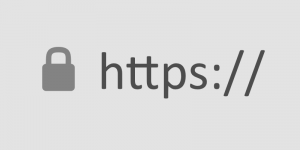by Charles Oropallo | Oct 23, 2025 | Email, Security, Technical Help
 Phishing attacks have become more sophisticated than ever in 2025. Cybercriminals now use AI to craft convincing emails that mimic your trusted contacts perfectly. They’re targeting small businesses more aggressively because they know you might not have enterprise-level security budgets.
Phishing attacks have become more sophisticated than ever in 2025. Cybercriminals now use AI to craft convincing emails that mimic your trusted contacts perfectly. They’re targeting small businesses more aggressively because they know you might not have enterprise-level security budgets.
But here’s the good news: protecting your inbox doesn’t require expensive solutions or a computer science degree. You just need to know what to look for and implement a few key safeguards. Think about what’s connected to your email accounts – your banking, your customer data, your business operations. That’s why phishing avoidance should be your top priority this year.
Let’s dive into practical steps you can take today to bulletproof your inbox against these increasingly clever attacks.
Set Up Email Authentication to Block Impersonators
Email authentication is your first line of defense against domain spoofing. When someone tries to send emails pretending to be from your business, these protocols will catch them.
SPF (Sender Policy Framework) tells email servers which IP addresses are allowed to send emails from your domain. Think of it as a guest list for your domain – only approved senders get through.
DKIM (DomainKeys Identified Mail) adds a digital signature to your outgoing emails. It’s like a tamper-proof seal that proves the message really came from you and wasn’t altered in transit.
DMARC (Domain-based Message Authentication, Reporting, and Conformance) combines SPF and DKIM, then tells other email servers what to do with emails that fail these checks. You can set it to quarantine suspicious emails or reject them entirely.
Setting up these protocols requires adding DNS records to your domain. If that sounds intimidating, most hosting providers or IT consultants can handle this quickly. The investment pays off immediately – you’ll see fewer spoofed emails reaching your contacts and customers.
Recognize the New Generation of Phishing Emails
Today’s phishing emails are getting scary good at mimicking legitimate communications. AI helps scammers create perfect grammar, use your company’s writing style, and even reference recent events or conversations.
Watch for these red flags that still give away phishing attempts:
Suspicious sender addresses often use lookalike domains. Instead of “fedex.com,” you might see “fedx-support.com” or “fedex-delivery.net.” Always check the actual sender address, not just the display name.
Urgent language designed to bypass your critical thinking. Phrases like “immediate action required,” “account will be closed,” or “verify within 24 hours” should trigger your skepticism.
Generic greetings like “Dear Customer” instead of your actual name. Legitimate businesses usually personalize their communications, especially for account-related messages.
Mismatched links where the displayed text says one thing but the actual URL leads somewhere else. Hover over links before clicking to see where they really go.
Unexpected attachments requiring immediate download or execution. Be especially wary of .zip files, .exe files, or documents with embedded macros from unknown senders.
Implement Smart Behavioral Practices
Your daily email habits matter more than any security software. Small changes in how you handle emails can prevent most successful phishing attacks.
Never click links in emails unless you absolutely trust the sender. When in doubt, open a new browser window and navigate to the company’s website directly. This simple practice stops most credential theft attempts cold.
Verify suspicious requests through alternative channels. If your “boss” emails asking for urgent wire transfers or sensitive information, pick up the phone and confirm. Scammers count on you following email instructions without verification.
Keep your software updated. Email clients, browsers, and operating systems regularly patch security vulnerabilities that phishers exploit. Enable automatic updates whenever possible.
Use different passwords for different accounts. When one account gets compromised, you don’t want attackers accessing everything else. Password managers make this easier by generating and storing unique passwords for each service.
Deploy Multi-Factor Authentication Strategically
Multi-factor authentication (MFA) blocks most phishing attacks even when criminals steal your password. But not all MFA is created equal in 2025.
Avoid SMS-based authentication when possible. Scammers can intercept text messages or use social engineering to redirect your phone number. It’s better than nothing, but other options provide stronger protection.
App-based authentication using Google Authenticator or Microsoft Authenticator offers better security. These generate time-based codes that work even without internet connectivity.
Hardware security keys like YubiKey provide the strongest protection against phishing. They use cryptographic proof that can’t be phished, even by sophisticated attacks. For businesses handling sensitive data, this investment pays for itself quickly.
Choose the Right Email Security Tools
Modern email security goes beyond basic spam filtering. AI-powered solutions can detect subtle patterns that humans might miss.
Advanced threat protection services analyze email content, sender behavior, and link destinations in real-time. They catch zero-day phishing attempts that haven’t been reported yet.
Email sandboxing opens suspicious attachments in isolated environments to check for malware before they reach your inbox. This protects against document-based attacks that bypass traditional antivirus.
User reporting tools make it easy for your team to flag suspicious emails. Many security platforms learn from these reports, improving protection for everyone.
Link rewriting services intercept clicks on suspicious URLs and scan them before allowing access. This provides a safety net when users click without thinking.
Train Your Team Without Boring Them
Security awareness training works best when it’s relevant and engaging. Skip the generic presentations and focus on real scenarios your business might face.
Run phishing simulations that mimic actual threats targeting your industry. Banking clients might see fake loan notifications, while retail businesses could see shipping updates. Make the training relevant to daily operations.
Create a no-blame reporting culture. Team members should feel comfortable reporting suspicious emails without fear of embarrassment. Praise people for being cautious – it’s exactly the behavior you want.
Share recent examples of phishing attempts targeting similar businesses. Real-world cases are more memorable than theoretical scenarios.
Keep sessions short and focused. Fifteen-minute monthly updates work better than annual marathon training sessions. People retain information better in small, digestible pieces.
Protect Your Business Email Specifically
Business email faces unique threats that personal email doesn’t encounter. Attackers research your company structure, recent news, and business relationships to craft targeted attacks.
Business Email Compromise (BEC) attacks target financial processes. Scammers impersonate executives or vendors to trick employees into wire transfers or credential sharing. Always verify payment requests through secondary channels.
Supply chain phishing uses compromised vendor accounts to attack customers. Even trusted partners can become unwitting attack vectors. Maintain healthy skepticism even with familiar senders.
CEO fraud targets employees with fake urgent requests from leadership. Attackers study your organizational chart and communication patterns to make requests seem legitimate.
Keep Your Defenses Current
Phishing tactics evolve constantly, so your protection strategies must evolve too. What worked last year might not catch this year’s threats.
Monitor your email authentication reports. DMARC generates reports showing who’s trying to send emails from your domain. Review these monthly to catch impersonation attempts early.
Update your security awareness training quarterly with new threat examples. Cybercriminals adapt their tactics based on what works, so your team needs to stay current.
Test your backup and recovery procedures. Even with perfect prevention, some attacks might succeed. Regular testing ensures you can recover quickly without paying ransoms or losing critical data.
Review and update your incident response plan. Everyone should know who to contact and what steps to take when phishing attacks succeed. Quick response can minimize damage significantly.
Take Action Today
Phishing avoidance isn’t something you can set up once and forget. It requires ongoing attention and regular updates. But the effort protects your business reputation, customer data, and financial security.
Start with email authentication – SPF, DKIM, and DMARC records provide immediate protection against domain spoofing. Then implement multi-factor authentication on critical accounts. These two steps alone will block most common phishing attacks.
Train your team to recognize and report suspicious emails. Create processes for verifying unexpected requests through alternative communication channels. The combination of technology and smart human behavior creates a robust defense against even sophisticated attacks.
Remember, cybercriminals are running businesses too. They target victims who look like easy marks and move on when defenses are strong. Make your business a hard target, and attackers will focus their efforts elsewhere.
For additional technical help with email security implementation, check out our email security resources for step-by-step guidance on protecting your business communications.










by Charles Oropallo | Aug 20, 2025 | Technical Help, Website Development, Website Updates
 Let’s be honest, you didn’t start your business to become a cybersecurity expert. You’ve got products to sell, customers to serve, and a bottom line to protect. But here’s the thing: spending hours wrestling with complicated security tutorials isn’t the answer.
Let’s be honest, you didn’t start your business to become a cybersecurity expert. You’ve got products to sell, customers to serve, and a bottom line to protect. But here’s the thing: spending hours wrestling with complicated security tutorials isn’t the answer.
The good news? Website security doesn’t have to eat up your entire weekend. With these seven practical hacks, you can lock down your site without needing a computer science degree. These aren’t theoretical tips, they’re battle-tested strategies that take minutes to implement but provide months of protection.
Think of this as your security cheat sheet. No fluff, no technical jargon, just straight-forward steps that actually work.
1. Turn On Multi-Factor Authentication (MFA) Everywhere
Here’s your first quick win: enable multi-factor authentication on every account that touches your business. This means requiring two forms of identification, like your password plus a code sent to your phone, before anyone can access your systems.
Why does this matter? Even if hackers crack your password, they still can’t get in without that second verification step. It’s like having a deadbolt and a security chain on your front door.
Set this up on your website admin panel, email accounts, social media profiles, and any business applications you use. Most platforms make this incredibly easy, usually just a toggle switch in your security settings.
Don’t skip this step because it seems like a hassle. The extra 30 seconds during login is nothing compared to the weeks you’d spend recovering from a breach.
2. Get That SSL Certificate Installed (And Keep It Updated)
If your website URL doesn’t start with “https://”, you’re broadcasting to the world that your site isn’t secure. Visitors see those dreaded “Not Secure” warnings, search engines penalize your rankings, and hackers see an easy target.
An SSL certificate encrypts data between your website and visitors. It’s like putting your conversation in a locked briefcase instead of shouting it across a crowded room.
Most hosting providers offer SSL certificates for free or under $20 per year. If you’re not sure whether yours is installed correctly, just look at your address bar. You should see a little lock icon next to your domain name.
Pro tip: Set a calendar reminder to check your SSL certificate renewal date. An expired certificate means your site goes back to showing security warnings, not exactly the professional image you want.
3. Schedule Monthly 15-Minute Security Checkups
Here’s where most business owners go wrong: they set up security once and forget about it. That’s like installing smoke detectors and never checking the batteries.
Instead, block out 15 minutes each month for a quick security review. During this time, scan for suspicious login attempts, check for broken or modified pages, and verify your backups are working.
You don’t need fancy tools for this. Most content management systems have built-in activity logs that show recent changes and user logins. Look for anything unusual, logins from strange locations, files you didn’t create, or pages that suddenly load slowly.
Think of this as preventive maintenance for your digital storefront. Catching problems early means fixing them takes minutes instead of days.
4. Enable Automatic Updates (Yes, Really)
“But what if an update breaks my site?” This fear keeps many business owners running outdated, vulnerable software. Here’s the reality: the risk of a hacker exploiting an old security hole far outweighs the small chance an update causes problems.
Software updates aren’t just about new features, they’re about patching security vulnerabilities that hackers actively target. Running outdated software is like leaving your keys in an unlocked car.
Enable automatic updates for your website’s core software, plugins, and themes. If your platform doesn’t support automatic updates, set weekly calendar reminders to install them manually.
Still worried about updates breaking things? That’s what backups are for (more on that in tip #6). The peace of mind from staying current on security patches is worth the occasional minor glitch.
5. Implement a Real Password Policy
“Password123!” doesn’t count as secure, no matter how many exclamation points you add. Weak passwords are like having a “Welcome” mat for hackers.
Create a simple password policy for your team: minimum 12 characters, mix of letters/numbers/symbols, and no reusing passwords across accounts. Better yet, use a password manager to generate and store complex passwords automatically.
Think about what’s connected to your email accounts, your website admin panel, and your business applications. One compromised password can unlock everything. Don’t make it easy for the bad guys.
If remembering complex passwords feels overwhelming, password managers like Bitwarden or LastPass do the heavy lifting. They generate random passwords and fill them in automatically, security made simple.
6. Set Up Automatic Backups and Vulnerability Scanning
Imagine losing months of work because your website got hacked or your server crashed. Now imagine getting everything back with the click of a button. That’s the power of automatic backups.
Configure daily backups of your entire website: files, database, everything. Store these backups off-site, not on the same server as your website. Many hosting providers include this service, or you can use plugins that backup to cloud storage.
Pair this with vulnerability scanning. Services like Sucuri or Wordfence automatically check your site for malware, outdated software, and security holes. They send email alerts when they find problems, so you can fix issues before hackers exploit them.
The goal isn’t to never have problems: it’s to bounce back quickly when they happen. Automatic backups and scanning give you that resilience without ongoing effort.
7. Audit Your Plugins and Third-Party Tools
Your website is only as secure as its weakest link. That forgotten plugin you installed two years ago might be full of security holes, giving hackers a backdoor into your site.
Conduct a quarterly audit of every plugin, integration, and third-party tool connected to your website. Ask yourself: “Do I actually use this? Is it from a reputable developer? When was it last updated?”
Delete anything you don’t actively use. For the tools you keep, enable security notifications so you know about vulnerabilities immediately. Subscribe to security blogs or newsletters from your plugin developers.
This includes seemingly harmless additions like social media widgets, analytics tools, and contact forms. Each one represents a potential entry point. The fewer doors you have, the fewer you need to guard.
The Bottom Line: Security as a Business Habit
These seven hacks work because they create multiple layers of protection without requiring constant attention. You’re not trying to become a security expert: you’re building good habits that run on autopilot.
The key is treating security like any other business routine. You wouldn’t skip payroll or forget to pay rent. Website security deserves the same consistent attention.
Start with multi-factor authentication and SSL certificates: these give you the biggest security boost for the least effort. Then work through the other tips over the next few weeks.
Your future self will thank you when you’re running a secure, professional website instead of dealing with the aftermath of a security breach. And your customers will appreciate knowing their information is safe in your hands.
Need help implementing any of these security measures? Our team at The CharlesWorks Corner specializes in making website security simple and manageable for busy business owners. Don’t let security concerns keep you up at night when practical solutions are just a click away.










by Charles Oropallo | Apr 9, 2025 | SEO, Technical Help, Website Development
 You’re paying for a website, but your local customers can’t find you online. Sound familiar? Here’s the truth: most web developers focus on making sites look pretty. They skip the local search engine optimization (SEO) tactics that actually get you found.
You’re paying for a website, but your local customers can’t find you online. Sound familiar? Here’s the truth: most web developers focus on making sites look pretty. They skip the local search engine optimization (SEO) tactics that actually get you found.
Local SEO isn’t rocket science. It’s a series of strategic moves that help your business appear when people search for services “near me.” The best part? You can implement most of these yourself.
Let’s dive into the strategies that actually move the needle for small businesses.
Your Google Business Profile Is Everything
Your Google Business Profile is the foundation of local visibility. It’s free, takes 15 minutes to set up, and directly impacts your Google Maps rankings.
Think about your last local search. You probably clicked on one of the first three businesses in the map results. Those spots aren’t random, they’re earned through profile optimization.
Complete every section of your profile. Add your business hours, phone number, website, and services. Upload high-quality photos of your storefront, products, and team. Businesses with photos get 42% more direction requests than those without.
Post regular updates about promotions, events, or new services. Google treats active profiles as more relevant than dormant ones. Even a weekly post about your business makes a difference.
Enable messaging if your business can respond quickly. Enable appointment booking if applicable. These features signal to Google that your business is engaged and customer-focused.
NAP Consistency Rules Everything
NAP stands for Name, Address, Phone Number. This information must be identical everywhere your business appears online. Everywhere means your website, social media, directories, and citations.
Here’s what happens when your NAP is inconsistent: Google doesn’t trust your business information. Confused search engines don’t rank confused businesses highly.
Create a master document with your exact business information. Use “Street” instead of “St.” Use your local phone number, not a toll-free number. If your business name is “Joe’s Coffee,” don’t call it “Joe’s Coffee Shop” anywhere else.
Check your NAP across these platforms: Google Business Profile, Yelp, Facebook, Yellow Pages, Better Business Bureau, and industry directories. Fix any inconsistencies immediately.
One formatting tip that saves headaches later: always use your business address exactly as it appears on your Google Business Profile. This becomes your standard format everywhere else.
Local Keywords Are Your Best Friend
Local keywords help the right people find your business. These aren’t complicated, they’re simply your services plus your location.
Examples include “dentist in Portland,” “pizza delivery Chicago,” or “car repair near me.” Research what your customers actually search for using Google’s Keyword Planner or simply by typing your services into Google and seeing the autocomplete suggestions.
Create separate pages for different service areas if you serve multiple locations. A plumbing company serving three towns should have dedicated pages for each area. Each page should include local landmarks, neighborhood names, and area-specific information.
Don’t stuff keywords unnaturally into your content. Write for humans first, search engines second. A sentence like “Our Chicago pizza delivery service delivers pizza in Chicago” sounds robotic and hurts more than it helps.
Instead, write naturally: “We deliver fresh pizza throughout Chicago’s downtown area, including the Loop and River North neighborhoods.”
Mobile Optimization Can’t Be Optional
Sixty percent of local searches happen on smartphones. Google uses mobile-first indexing, meaning they primarily look at your mobile site to determine rankings.
Your website must load quickly on phones. Compress images, choose a fast hosting provider, and avoid heavy plugins that slow loading times. A three-second delay can lose 53% of mobile visitors.
Make buttons large enough for thumbs. Avoid tiny links or navigation elements that frustrate mobile users. Test your site on different devices and screen sizes.
Eliminate pop-ups that cover mobile screens. Google penalizes sites with intrusive mobile pop-ups. If you must use pop-ups, make them easy to close and ensure they don’t block important content.
Check your mobile-friendliness with Google’s Mobile-Friendly Test. It’s free and shows exactly what needs fixing.
Customer Reviews Drive Everything
Reviews influence both customers and search rankings. Google considers review quantity, frequency, and responses when determining local rankings.
Ask satisfied customers for reviews. Don’t be pushy, but don’t be shy either. A simple request after completing good work often works: “If you’re happy with our service, a quick Google review would really help our small business.”
Respond to every review, positive and negative. Thank customers for positive reviews. Address negative reviews professionally and offer to resolve issues offline.
Here’s a template for negative review responses: “Thanks for your feedback, [Name]. We apologize for your experience and would like to make this right. Please call us at [phone] so we can discuss this further.”
Never ignore reviews. Silent businesses look unengaged to both customers and Google.
Local Directories Still Matter
Getting listed on local directories builds credibility and provides valuable backlinks to your website. Start with major directories like Yelp, Yellow Pages, and your local Chamber of Commerce website.
Industry-specific directories matter too. Restaurants should be on OpenTable and TripAdvisor. Contractors should be on Angie’s List and Home Advisor.
Ensure your NAP information is consistent across all directories. Inconsistent listings hurt more than they help.
Don’t pay for directory submissions unless you’re certain they’re legitimate. Many “directory submission services” are scams that list your business on low-quality sites.
On-Page SEO With Local Focus
Optimize your website content for local search by including location-based keywords naturally throughout your pages.
Your homepage should mention your primary service area early and often. Include your city or region in your title tag, meta description, and main headings.
Create location-specific content that provides value. A home improvement company could write about local building codes, weather considerations, or neighborhood characteristics.
Add your address to your website footer. Include local landmark references in your content. Mention nearby businesses, events, or community involvement.
Don’t forget about image optimization. Name your photos with descriptive, location-specific filenames like “chicago-pizza-restaurant-interior.jpg” instead of “IMG_1234.jpg.”
Advanced Local SEO Tactics
Geo-tag your images when uploading to your website and social media. This embeds location data that helps search engines understand your business location.
Build relationships with other local businesses for natural backlink opportunities. Sponsor local events, join community organizations, or participate in local business associations.
Create Google Posts regularly through your Google Business Profile. These mini-blog posts appear in your knowledge panel and show Google that your business is active.
Monitor your online mentions using Google Alerts. Set up alerts for your business name to catch new reviews, mentions, or potential NAP inconsistencies.
Consider local schema markup on your website. This structured data helps search engines understand your business information more clearly.
Common Mistakes That Kill Local Rankings
Buying fake reviews destroys credibility and violates Google’s guidelines. Focus on earning authentic reviews through excellent service.
Using inconsistent business names across platforms confuses search engines. Stick to one version of your business name everywhere.
Ignoring negative reviews makes problems worse. Address concerns professionally and publicly to show potential customers how you handle issues.
Creating multiple Google Business Profiles for one location results in suspension. Google allows one profile per location, period.
Measuring Your Local SEO Success
Track your Google Business Profile insights to see how customers find you. Monitor calls, website clicks, and direction requests.
Use Google Search Console to see which local keywords drive traffic to your website. Focus your efforts on keywords that generate actual business.
Check your local rankings monthly for your most important keywords. Tools like BrightLocal or simply searching on different devices can show your position.
Most importantly, track actual business results. More calls, appointments, or walk-ins matter more than rankings alone.
Local SEO isn’t complicated, but it requires consistency and attention to detail. Start with your Google Business Profile, fix your NAP consistency, and build from there. Your local customers are searching for your services right now( make sure they can find you.)










by Charles Oropallo | Jan 17, 2025 | Security, Technical Help
Recently, I encountered an issue while attempting to renew an SSL certificate for one of my domains, (let’s call it) testdomain.com, using Let’s Encrypt on a server running Virtualmin on Debian 12. The process was more complicated than I expected due to a small oversight that many others could easily make. This article details my experience, the errors I encountered due to Let’s Encrypt rate limits (which I didn’t know existed), and steps to avoid or resolve such issues.
The Problem: Let’s Encrypt Rate Limits for Failed Authorizations
 A padlock that shows with an encrypted site using https in some browsers.
A padlock that shows with an encrypted site using https in some browsers.Let’s Encrypt provides free SSL certificates for securing websites. However, it enforces rate limits to ensure fair usage and prevent abuse. While attempting to renew the SSL certificate for testdomain.com, I discovered that the DNS settings were not pointed to my server, causing repeated failed validation attempts. By the time I fixed the DNS settings, I had hit Let’s Encrypt’s rate limit for failed authorizations.
This limit restricts requests for the same domain to 5 failed attempts per hour. Once you hit this limit, you must wait for the cooldown period to expire before trying again.
How the Error Appeared in Virtualmin
In the Virtualmin interface, I attempted to renew the certificate by navigating to:
- Virtualmin > Server Configuration > SSL Certificate
- Clicking on the Let’s Encrypt tab
- Ensuring the domain and subdomain (e.g.,
testdomain.com and www.testdomain.com) were selected
- Clicking the Request Certificate button
The renewal process failed with an error that Virtualmin reported as “an unknown issue.” Upon further investigation, I found the detailed error logs in the Let’s Encrypt log file located at:
/var/log/letsencrypt/letsencrypt.log
From the log, I saw this message:
urn:ietf:params:acme:error:rateLimited :: There were too many requests of a given type :: too many failed authorizations (5) for "testdomain.com" in the last 1h0m0s, retry after [time].
Understanding Let’s Encrypt Rate Limits
Let’s Encrypt enforces several types of rate limits. Here are the key ones:
- Failed Validation Limit:
- 5 failed validations per domain per hour.
- This applies to any validation failure, such as DNS misconfigurations or inaccessible
.well-known/acme-challenge directories.
- Duplicate Certificate Limit:
- 5 identical certificates per week.
- If you request the same set of domains repeatedly, you’ll hit this limit.
- Certificates per Registered Domain:
- 50 certificates per registered domain per week.
- All subdomains count toward this limit.
- Account-Level Requests:
- 50 certificates per account per week.
These limits are described in detail at Let’s Encrypt’s rate limit documentation.
Diagnosing the Problem
If you encounter a similar issue, here are the steps to diagnose and resolve it:
1. Check DNS Settings
- Ensure the domain’s DNS A records correctly point to your server.
- Use tools like
dig or online DNS propagation checkers to verify.
2. Verify Webroot Accessibility
3. Examine Let’s Encrypt Logs
4. Check Cooldown Period
- If you’ve hit the rate limit, the log will indicate a
Retry-After time in UTC. Convert it to your local timezone to determine when you can retry.
5. Dry Run Your Request
Steps to Avoid Future Issues
1. Ensure DNS Settings Before Requesting Certificates
- Double-check that DNS records point to the correct server and have propagated globally before initiating an SSL request.
2. Test Webroot Configuration
- Verify that the
.well-known/acme-challenge/ directory is accessible for all domains you’re requesting.
3. Use the Dry-Run Option
- Always test with
--dry-run before making a live request to avoid hitting limits.
4. Automate Renewals
- Virtualmin and Certbot support automated renewals. Ensure the cron job is configured correctly and DNS remains stable.
5. Avoid Forcing Duplicate Requests
- Options like
--duplicate and --force-renewal can lead to unnecessary requests. Only use them when absolutely necessary.
Conclusion
Hitting Let’s Encrypt’s rate limits can be frustrating, but understanding the causes and solutions can save time and effort. By checking DNS settings, verifying webroot accessibility, and using dry runs, you can prevent failed authorizations and avoid cooldown periods.
If you’re using Virtualmin, remember to check the Let’s Encrypt logs for detailed error messages, and plan your certificate renewals carefully to stay within the rate limits. Hopefully, my experience with testdomain.com helps you navigate and prevent similar issues.
As always, proactive testing and attention to detail go a long way in maintaining a secure and smoothly running server.










by Charles Oropallo | Dec 16, 2024 | Do-It-Yourself, Technical Help, Website Development, WordPress
SimplePractice: Incorporating its Widget into your WordPress Divi Website
This article is about adding the SimplePractice widget to your WordPress website that uses the Divi theme. I’ll explain what SimplePractice is and get into how to install its widget into your WordPress Divi website.
Simplifying Practice Management for Mental Health Professionals
 SimplePractice is a trusted all-in-one platform designed to make life easier for mental health professionals and other wellness practitioners. See https://SimplePractice.com for more details. It streamlines essential administrative tasks like scheduling, billing, documentation, and client communication, allowing practitioners to focus on what truly matters—their clients. With a user-friendly interface and powerful tools, it’s an ideal solution for solo practitioners and small group practices.
SimplePractice is a trusted all-in-one platform designed to make life easier for mental health professionals and other wellness practitioners. See https://SimplePractice.com for more details. It streamlines essential administrative tasks like scheduling, billing, documentation, and client communication, allowing practitioners to focus on what truly matters—their clients. With a user-friendly interface and powerful tools, it’s an ideal solution for solo practitioners and small group practices.
One of the standout features is its online scheduling tool, which lets clients book appointments through a secure, HIPAA-compliant client portal. This portal also allows clients to complete intake forms, sign documents, and even message their provider—all in one place. For therapists who offer virtual sessions, the telehealth integration enables seamless video appointments without the need for third-party apps.
SimplePractice also simplifies billing and insurance management. Providers can create invoices, process payments, and submit insurance claims directly through the system. Plus, its customizable progress notes and treatment plan templates make maintaining records both quick and efficient.
What makes SimplePractice shine is its simplicity. The platform is intuitive and easy to navigate, with minimal learning curves for both practitioners and their clients. The robust support team and extensive online resources ensure any questions are resolved quickly.
Whether it’s automating reminders, securely managing client data, or customizing a practice’s workflow, SimplePractice makes running a private practice straightforward and stress-free. It’s the tool busy professionals rely on to save time, stay organized, and provide exceptional care.
The SimplePractice appointment request widget can be incorporated into a development domain for your client’s pending Divi site and ultimately in the live site. Here’s how you can achieve this:
Step 1: Review the Widget Code
Once you have the widget code from the client, you need to verify its structure. Typically, it includes a <script> tag provided by SimplePractice. For example:
The data-sp-client-id is unique to your client’s SimplePractice account, so ensure that value matches.
Step 2: Add the Widget Code to the Divi Site
In Divi, you can embed custom code into the site using the Code Module or Theme Builder:
- Using the Divi Code Module:
- Open the page or section where you want to display the widget.
- Add a Code Module within the desired row or column.
- Paste the SimplePractice widget code into the module.
- Save the changes and preview to ensure the widget appears as expected.
- Using Divi Theme Builder (if the widget should appear site-wide):
- Navigate to Divi > Theme Builder in the WordPress dashboard.
- Create or edit a custom header, footer, or body section.
- Add a Code Module and paste the widget code.
- Assign the template to the desired pages or the entire site.
Step 3: Customize the Widget (Optional)
The Customizing Your Widget section in the SimplePractice documentation explains how you can:
- Change colors, fonts, and styles to match the Divi site’s design.
- Customize settings by modifying the
<script> code parameters.
If your client’s code already includes customization, verify if it aligns with the new site’s look. For further adjustments, update the styles within the widget script.
Step 4: Use the Development Domain
SimplePractice widgets do not rely on a specific domain to function, as long as the data-sp-client-id is correct. You can install and test the widget on the development domain without any issues. Once the site goes live on the actual domain, the widget should still work without changes.
However, after the site goes live, it’s good practice to:
- Confirm the widget works properly on the live domain.
- Recheck any customized URLs or redirects tied to the widget to ensure they match the live setup.
Step 5: Test the Integration
- Navigate to the development site.
- Test the widget to ensure it displays and works correctly (e.g., appointment requests can be submitted).
- Check for any conflicts with other scripts or plugins on the Divi site.










by Charles Oropallo | Nov 26, 2024 | Do-It-Yourself, Technical Help
Resolving Default Page Mismatches
 We had a website transferred to us for hosting by a client who did not know about resolving default page mismatches. This occurs, for example, the a page not found error happens when a site visitor is clicking on your navigation trying to get back to the home page. When hosting a website, ensuring that the correct default page is served when visitors navigate to the root domain (e.g.,
We had a website transferred to us for hosting by a client who did not know about resolving default page mismatches. This occurs, for example, the a page not found error happens when a site visitor is clicking on your navigation trying to get back to the home page. When hosting a website, ensuring that the correct default page is served when visitors navigate to the root domain (e.g., exampledomain.com) is critical. A mismatch between menu navigation items and the actual default page can confuse visitors and lead to a poor user experience. Below, I’ve outlined several methods to address such issues. Each method depends on the tools and access available on your hosting environment.
1. Redirect Default Page Using a New default.htm File
The simplest solution is to create a default.htm file that redirects visitors to the correct index.html file.
Steps:
- Create a new file named
default.htm in the root directory of the website.
- Add the following HTML code to the file:
<!DOCTYPE html>
<html lang="en">
<head>
<meta http-equiv="refresh" content="0;url=index.html">
<title>Redirecting...</title>
</head>
<body>
<p>If you are not redirected, <a href="index.html">click here</a>.</p>
</body>
</html>
- Save and upload the file to the server.
When visitors access exampledomain.com/default.htm, they will be automatically redirected to index.html.
2. Set Default Pages in Virtualmin
If your hosting server uses Virtualmin, you can configure the default pages it prioritizes when serving the site.
Steps:
- Log in to Virtualmin.
- Navigate to the specific domain by selecting it from the dropdown.
- Go to Server Configuration > Website Options.
- Locate the option for “Default index file names” or similar.
- Add
default.htm to the list if it is not already present. For example:
index.html index.htm default.htm
- Save the changes and reload the website.
With this configuration, default.htm will be recognized as a valid default page alongside index.html.
3. Use an .htaccess File
You can also use an .htaccess file to specify which files should be served as default pages.
Steps:
- Access the root directory of the website via FTP or the file manager.
- Open or create a file named
.htaccess.
- Add the following lines to the file:
DirectoryIndex default.htm index.html index.htm
- Save the file and upload it to the server.
This tells the server to prioritize default.htm as the default page. If default.htm is not found, it will fall back to index.html or other specified files.
4. Update Navigation Links in the Website’s Code
If all navigation menu items point to default.htm, you can update the site’s HTML files to point to index.html instead.
Steps:
- Download the HTML files that contain navigation links.
- Search for
default.htm in the code and replace it with index.html.
- Save and upload the updated files to the server.
This ensures that navigation links point to the correct file and prevents further confusion.
5. Configure the Web Server Directly
For advanced users with root access to the server, you can modify the web server’s configuration files to set the default page order.
Apache Servers:
- Edit the Apache configuration file (e.g.,
/etc/httpd/conf/httpd.conf or /etc/apache2/apache2.conf).
- Find the
DirectoryIndex directive and modify it:
DirectoryIndex default.htm index.html index.htm
- Save the file and restart Apache:
systemctl restart apache2
Nginx Servers:
- Edit the server block configuration file (e.g.,
/etc/nginx/sites-available/exampledomain.com).
- Modify the
index directive:
index default.htm index.html index.htm;
- Save the file and restart Nginx:
systemctl restart nginx
6. Combine Redirect and Navigation Fixes
For maximum compatibility and user experience, you can combine several methods. For example:
- Use the
.htaccess file or Virtualmin to prioritize default.htm.
- Add a redirect in
default.htm for edge cases.
- Update all navigation links to
index.html.
Final Thoughts on Resolving Default Page Mismatches
Choosing the right method depends on your hosting setup and access level. If you’re looking for a quick fix, creating a redirect in default.htm is the easiest option. For a more permanent and scalable solution, consider updating the server configuration or .htaccess file.
Always remember to test changes thoroughly to ensure they work as expected before making them live. This will prevent any disruptions for your website’s visitors.
And, finally, at CharlesWorks we take care of these types of issues for you.










 Phishing attacks have become more sophisticated than ever in 2025. Cybercriminals now use AI to craft convincing emails that mimic your trusted contacts perfectly. They’re targeting small businesses more aggressively because they know you might not have enterprise-level security budgets.
Phishing attacks have become more sophisticated than ever in 2025. Cybercriminals now use AI to craft convincing emails that mimic your trusted contacts perfectly. They’re targeting small businesses more aggressively because they know you might not have enterprise-level security budgets. Let’s be honest, you didn’t start your business to become a cybersecurity expert. You’ve got products to sell, customers to serve, and a bottom line to protect. But here’s the thing: spending hours wrestling with complicated security tutorials isn’t the answer.
Let’s be honest, you didn’t start your business to become a cybersecurity expert. You’ve got products to sell, customers to serve, and a bottom line to protect. But here’s the thing: spending hours wrestling with complicated security tutorials isn’t the answer. You’re paying for a website, but your local customers can’t find you online. Sound familiar? Here’s the truth: most web developers focus on making sites look pretty. They skip the local search engine optimization (SEO) tactics that actually get you found.
You’re paying for a website, but your local customers can’t find you online. Sound familiar? Here’s the truth: most web developers focus on making sites look pretty. They skip the local search engine optimization (SEO) tactics that actually get you found.
 SimplePractice is a trusted all-in-one platform designed to make life easier for mental health professionals and other wellness practitioners. See
SimplePractice is a trusted all-in-one platform designed to make life easier for mental health professionals and other wellness practitioners. See  We had a website transferred to us for hosting by a client who did not know about resolving default page mismatches. This occurs, for example, the a page not found error happens when a site visitor is clicking on your navigation trying to get back to the home page. When hosting a website, ensuring that the correct default page is served when visitors navigate to the root domain (e.g.,
We had a website transferred to us for hosting by a client who did not know about resolving default page mismatches. This occurs, for example, the a page not found error happens when a site visitor is clicking on your navigation trying to get back to the home page. When hosting a website, ensuring that the correct default page is served when visitors navigate to the root domain (e.g., 


 European Union General Data Protection Regulation Compliant
European Union General Data Protection Regulation Compliant